 Rust Diseases - September 16, 2015 Jeff Schalau, Agent, Agriculture & Natural Resources University of Arizona Cooperative Extension, Yavapai County Rust fungi are complex and interesting plant diseases. About 7,000 species have been identified. The most common rust species are those that affect grain crops such as wheat, oats, and rye as well as turf grasses. Home gardeners and nature lovers in northern Arizona may have noticed rust diseases on snapdragons, apple trees, catclaw, and Elderica pine. I will briefly describe each of these here. All rusts are obligate parasites, meaning that they require a living host to complete their life cycle. In most cases, they do not always kill the host plant but can severely reduce their growth. Some rust fungi are capable of parasitizing plants of many families. Other rusts appear to be restricted to a genus or even an individual species. To further complicate matters, some rust fungi are referred to as “autoecious” and complete their life cycle on a single host plant species. Other rust fungi require two unrelated host plants to complete their life cycle. These are referred to as “heteroecious” and usually have markedly different visual characteristics on each of the separate host plants they colonize. The lesser impacted host plant is sometimes referred to as the “alternate” host. Snapdragon rust (Puccinia antirrhini) is autoecious and is not a rampant disease in northern Arizona. Flower gardeners may have noticed it at some point in their gardens because it causes leaves to wilt and yellow. Small yellow swellings form on leaves or stems and burst to release rusty colored spores. Concentric rings of spores form around the initial eruption. If an isolated infection is found, the infected plant can be removed. In areas with more humid climates, fungicides are often applied to prevent infections from occurring. Cedar apple rust (Gymnosporangium sp.) is heteroecious with one phase of its life cycle appearing on apple, quince, and hawthorn trees with the other phase occurring on various juniper species. Loss of leaves on fruit bearing trees reduces vigor, decreases yields, and may make the plants more susceptible to other diseases and environmental stresses. Here, it is not practical to remove all juniper hosts, but there are resistant fruit varieties. In the past 18 years, I have not seen this disease do a lot of damage to either infected junipers or fruit tree host species. Catclaw acacia (Senegalia greggii or Acacia greggii) is regularly infected by Ravenelia pringlei: an autoecious rust. It is noticeable where it causes a distorted growth pattern commonly called a "witches broom" covered in brown, dusty, spores. Some people have mistaken this rust for mistletoe. There is no known treatment for this disease. It is likely a cyclic disease acting as a natural population control on catclaw acacia. If you have it in an intensely managed area of your landscape, let it run its course over the summer and prune it out next winter discarding or burning the trimmings. Elderica pine (Pinus elderica) is frequently infected by Comandra blister rust (CBR). CBR is a heteroecious rust that normally colonizes ponderosa pine in our area, but was found to be especially destructive to Elderica pine after that species was introduced to northern Arizona by the landscape industry. The alternate host for CBR is Comandra pallida, a common northern Arizona native plant. Comandra pallida, also called bastard toadflax, is a small herbaceous perennial plant found in close association with native oak stands in northern Arizona. CBR causes branch dieback and death of susceptible pines of all ages. Swollen areas develop in branches and trunks, and the bark and underlying sapwood die. Over time, infected trees decline and must be removed. On pine, orange “blisters” develop on trunks and branches as the bark splits and ruptures. Infections on Comandra, the alternate host, appear as orange or rusty colored pustules on leaves after summer rains. For this reason, planting of Elderica pine (also called Mondell pine, Quetta pine, and Goldwater pine) is discouraged in areas where the alternate host exists. Since the Comandra plant is inconspicuous and it is associated with stands of oak, a distance of one mile or greater from native oak stands is often used to determine Elderica pine planting suitability. Prescott, Payson, and Sedona are known hot spots for this disease. Rusts are a complicated family of plant diseases. I have included several photos of the above described rust diseases and linked some publications below. Follow the Backyard Gardener on Twitter – use the link on the BYG website. If you have other gardening questions, call the Master Gardener help line in the Camp Verde office at 928-554-8992 or e-mail us at verdevalleymg@gmail.com and be sure to include your name, address and phone number. Find past Backyard Gardener columns or provide feedback at the Backyard Gardener web site: http://cals.arizona.edu/yavapai/anr/hort/byg/. Rust Disease Photos 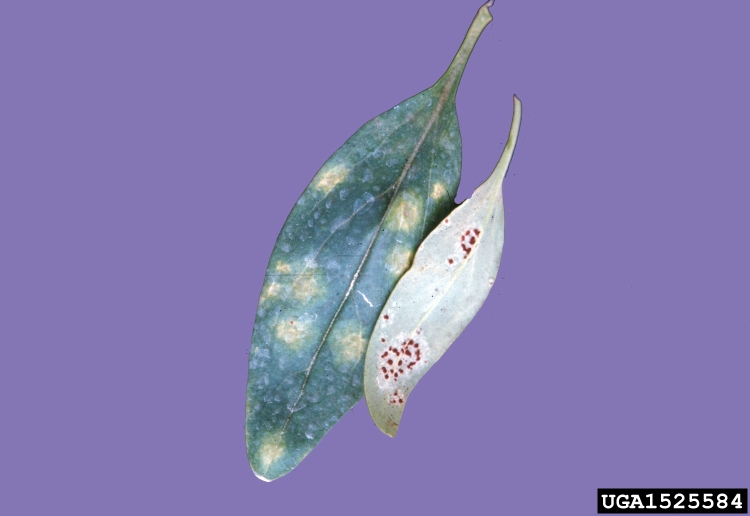 Snapdragon rust (Puccinia antirrhini) on snapdragon leaves (Department of Plant Pathology Archive, North Carolina State University, Bugwood.org). 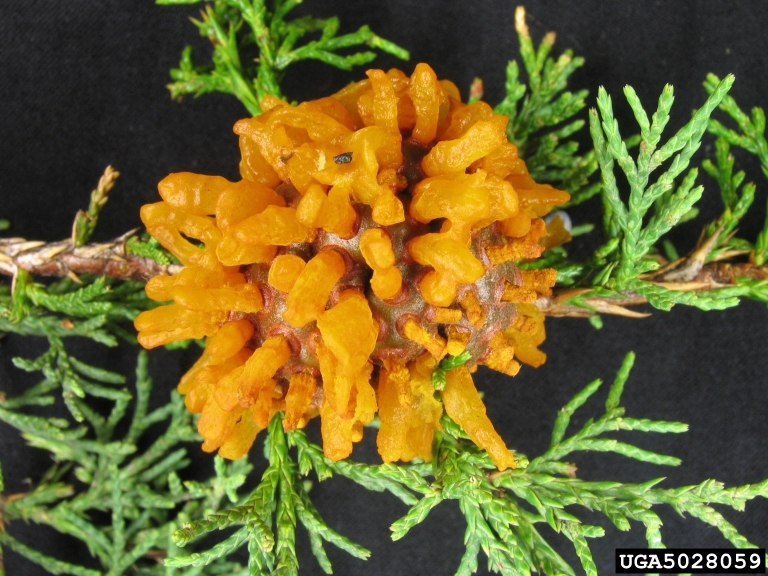 Cedar apple rust (Gymnosporangium juniperi-virginianae) on juniper (Joseph O'Brien, USDA Forest Service, Bugwood.org). 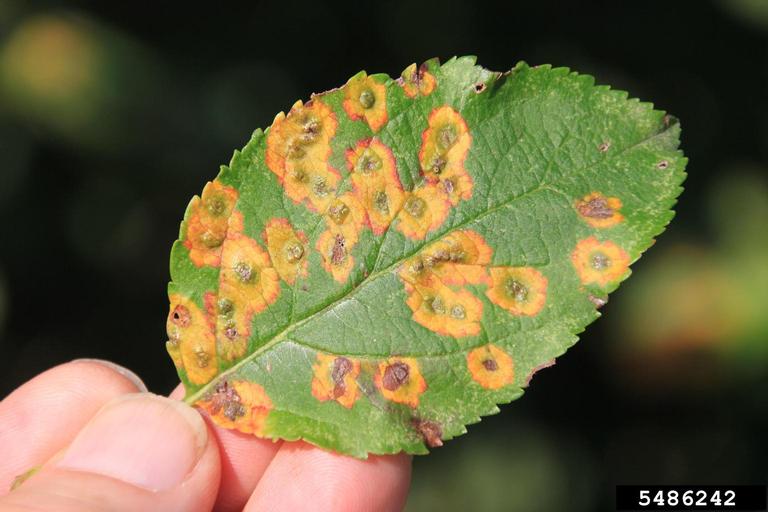 Cedar apple rust (Gymnosporangium juniperi-virginianae) on apple (James Chatfield, Ohio State University, Bugwood.org). 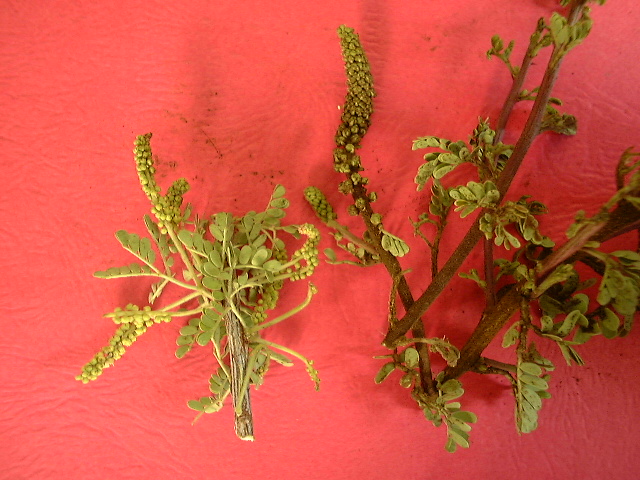 Ravenelia rust on catclaw - normal growth on left - diseased growth on right (Jeff Schalau, University of Arizona Cooperative Extension). 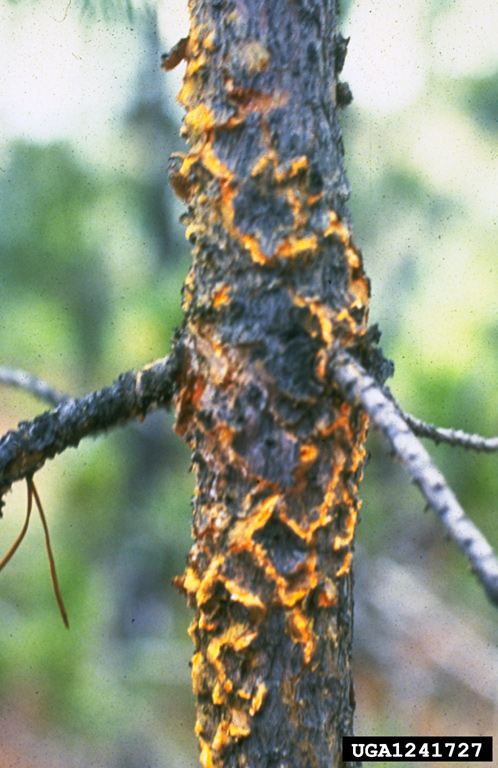 Additional Resources Rust Diseases - Trees and Shrubs (Cedar Apple Rust) University of Maryland Extension extension.umd.edu/hgic/rust-diseases-trees-and-shrubs Rust on Ornamentals New Mexico State University Cooperative Extension Service aces.nmsu.edu/ces/plantclinic/documents/rust-ornamentals-_od-7__final.pdf Comandra Blister Rust University of Arizona Cooperative Extension extension.arizona.edu/pubs/az1310.pdf |